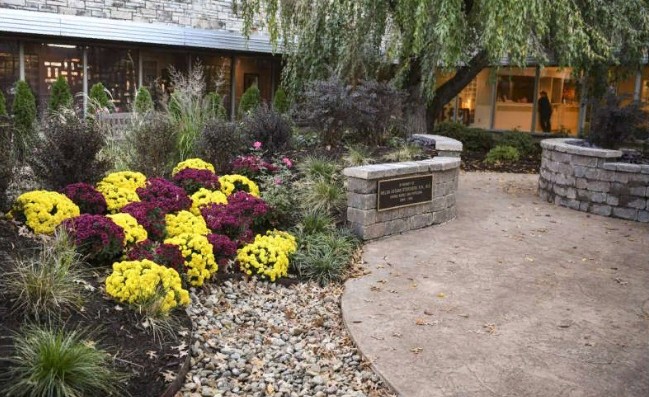According to a researcher, seeing ‘green’ can help patients navigate hospitals with less uncertainty and rage.
It’s easy to feel like a mouse in a labyrinth when navigating major hospitals. Finding their way from point A to point B inside a visually-challenged medical complex adds to an already stressful mental condition for patients and visitors.
Allowing nature is one possible answer, according to a landscape architecture researcher at West Virginia University.
Shan Jiang’s research found that bringing nature into huge hospitals can help to humanize the environment and reduce stress among patients, visitors, and healthcare providers.
Jiang, an associate professor at the University of California, Davis College of Agriculture, Natural Resources and Design, used immersive virtual environments—digitally created “worlds” in which users are immersed—for a controlled experiment in which participants were asked to complete various wayfinding tasks.
The hospital layout and room configurations were the same for all participants. One party, on the other hand, found enormous windows and vistas of nature within the corridor walls. The control group, on the other hand, saw solid walls with no natural light or vistas. The greenspace group used less time and walked less distance to fulfill their navigation tasks.
“Window views of nature and small gardens may effectively break down the boring interiors of massive hospital blocks and act as landmarks to facilitate people’s wayfinding and enrich their spatial experience,” Jiang added.
Participants’ mood states, particularly anger and perplexity, were “substantially eased” in the greenspace group, according to the study.
The findings of Jiang have been published in the journal Health Environments Research and Design.
According to a previous study, a patient or hospital visitor must complete at least seven steps in the navigation process before arriving at their final destination. Wayfinding concerns, according to the Center for Health Design, are an environmental stressor and a concerning matter in healthcare design.
Jiang said the study was driven by those issues, as well as her own personal experiences (her family members have worked in healthcare) and other people’s narratives of feeling lost in hospitals.
“Large hospitals can appear pleasant on the surface, but their functionality and internal circulation are in fact complex and confounding,” she explained.
Greenspaces located at critical decision points, such as the main corridor or the intersection of departmental units, can also function as landmarks that draw attention, facilitate navigating, and improve the navigational experience, according to the study.
Jiang, who has a background in landscape architecture, is fascinated by people’s immediate surroundings, notably the indoor-outdoor relationship and the limits between architecture and landscapes.
She has discovered that gardens and plants have powerful therapeutic impacts on people.
“You can explain such therapeutic effects from a variety of perspectives: people’s color/hue preferences tend to range from blue to green, nature and plants are positive distractions that can help people regain their attention, and human beings may have evolved a genetic preference for greenery from evolutionary perspectives,” Jiang said. “When looking at gardens and nature views, all systems work together to provide a pleasurable experience.”
Many hospitals in Europe, according to Jiang, have effectively combined “hospital in a park” themes. In the United States, she continued, every patient room at the Lucile Packard Children’s Hospital Stanford in California has patios and window nooks, and most rooms have direct views of a big healing garden.
Jiang’s contributions to this field will continue to expand. “Nature via a Hospital Window: The Therapeutic Benefits of Landscape in Architectural Design,” her new book, focuses on how windows and transparent spaces can improve people-nature interactions in healthcare settings.





